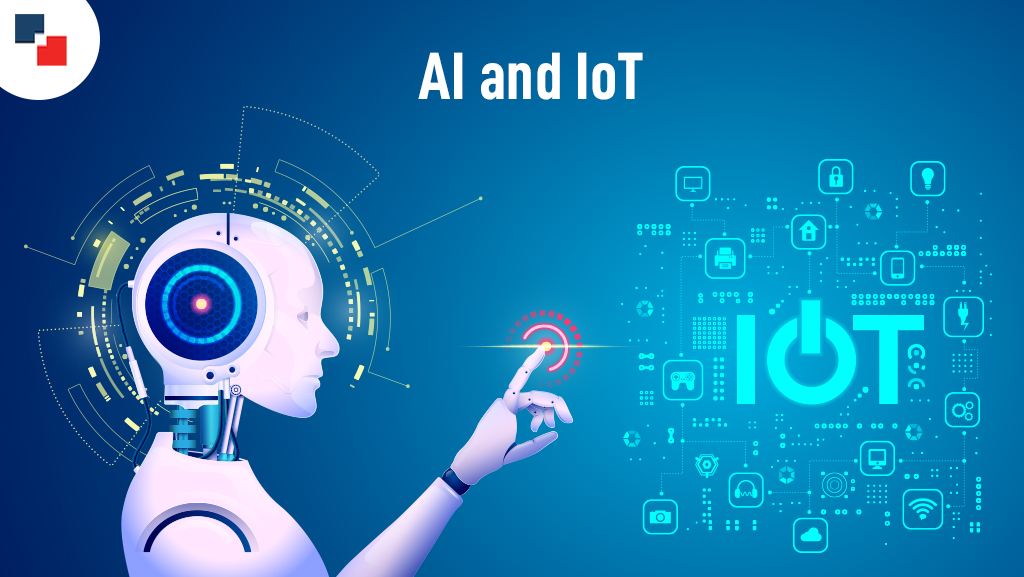The future of technology is now. AI and IoT are set to become the next big things in the tech world. But what exactly are IoT and AI? And what can it do for our everyday lives?
Let’s examine these two technologies in more detail.
To realize the full potential and future of IoT devices, it will be necessary to invest in new technologies. The convergence of AI (Artificial Intelligence) with IoT can revolutionize industries, businesses, and economies.
AI-enabled IoT produces intelligent machines that replicate intelligent behavior and aid in decision-making with minimal or no human interference.
Artificial Intelligence enables devices to learn from their data and experience, whereas IoT is concerned with the interaction of devices via the Internet.
What is IoT?
The Internet of Things (IoT) refers to the network of physical objects (“things”) embedded with sensors, software, and other technologies to connect and exchange data with other devices and systems over the Internet.
What is AI?
AI is a broad technology with multiple approaches, but improvements in machine learning and deep learning are generating a paradigm shift in almost every sector of the technology industry.
How AI and IoT work together
Statistics show that 64 billion IoT devices could be in use by 2025. When we talk about the latest technologies changing the IT industry, Artificial Intelligence and the Internet of Things are often at the top of the list.
In recent years, Artificial Intelligence has aided the Internet of Things in showing its huge potential, as the two entities are intimately connected.
The Internet of Things creates a huge amount of data, which is then processed by artificial intelligence, which helps to reach conclusions.
IoT provides data, and AI gains the power to access responses, allowing creativity and context to build intelligent behavior.
Since sensor data can be examined with AI, organizations can make informed decisions. IoT technology combined with AI provides the following effective responses,
- Assure efficient and accurate analysis
- Protect your network from cyberattacks
- Maintain, analyze, and get valuable insights from data
- Find a balance between personalization data privacy and security
- Helps with both real-time and post-event processing
- Establish a balance between centralized and decentralized intelligence
Difference Between IoT and AI
Internet of Things and Artificial Intelligence can be differentiated from one another based on the following four factors:
-
Scalability
IoT is inherently more scalable than AI because its architecture is based on the cloud. The cloud infrastructure eliminates the need for connections that are subjected to greater stress.
-
Cloud Computing
AI gives cloud computing tremendous strength. It allows machines to learn, analyze, act, and react as humans do.
AI enables machines to evaluate and examine historical data, recognize trends, and make decisions in real-time. This will eliminate the possibility of human error by automating the process.
Cloud computing and IoT boost productivity in everyday tasks and work well together. The Internet of Things generates huge amounts of data, and cloud computing provides a way for this data to go.
-
Expenses
Generally, IoT projects spend money on hardware, wireless connectivity, the host server (if applicable), and software development. AI project costs include data gathering, data lakes/warehouses, model deployment, and software development. In general, IoT projects are less costly than AI projects.
-
Proportion of Success
IoT projects are typically more successful than AI ventures. According to an IDC survey, only 30% of organizations claimed the best success rates for AI.
One of the main reasons why AI projects fail is that they don’t have enough data (quality and quantity). IoT projects have component failures but are mostly successful.
Future of AI in IoT
AI-based IoT can make real-time decisions, which is key to understanding and optimizing IoT devices in critical infrastructures.
AI can also help monitor and control devices, optimize power usage, and lower maintenance costs. Additionally, it can assist us to monitor energy consumption and generating data analyses.
The Internet of Things is the idea that devices should be able to talk to each other both locally and around the world. IoT uses in a variety of places including homes, hospitals, industries, and transportation hubs.
Examples of AI in IoT
-
Smart Homes
Smart Home is an umbrella word for technology that makes a person’s life at home easier, safer, and more digitalized. When connected to the internet, TVs, washing machines, air conditioners, microwaves, and even doors become smart.
-
Driverless Car like Waymo
Self-driving cars are probably the most well-known type of AIOT. Waymo, Google’s self-driving car brand, is currently undergoing testing and will be released soon.
-
Wearable Devices
Smartwatches and other wearable devices have grown in popularity. These watches monitor your sleeping patterns, heart rate, and exercise regimen continuously and provide you with a health assessment.
-
Agricultural Industry
AIOT has started to make an impact in the field of agriculture. Farmers have started using precision agriculture, which uses AI technology to help them keep an eye on diseases and pests that attack plants.
Conclusion
Now that we’ve seen how and why AI is changing the world of IoT, it’s time to examine potential opportunities and benefits for businesses. The bottom line is that businesses that understand AI and IoT can leverage these trends to meet previous challenges. By incorporating AI into IoT solutions, companies can succeed in the increasingly competitive business world.
Stay tuned for tech news, and if you have good writing skills, email hello@globaltechnologyupdate.com with your sample article. Excellent content is something we always work toward.
Happy Writing….!




